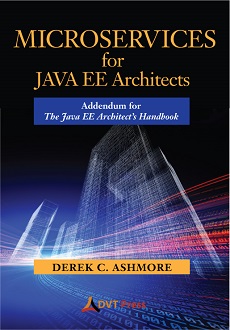Microservices for Java Architects
by Derek C. Ashmore

This book is an addendum for the Java EE Architect’s Handbook that details Microservices Architectures. This book will define microservices and provide an overview of costs and benefits. As with the handbook, I’ll go on to address architecture, design, and implementation concerns specific to microservices architecture.
Forthcoming April, 2016
